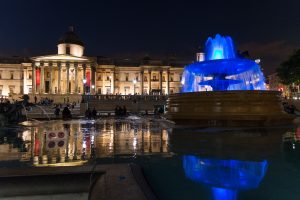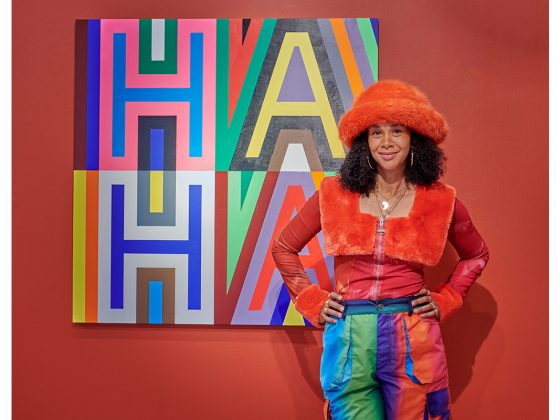Picasso, Stingel, Bourgeois
The Young PICASSO – Blue and Rose Periods
February 3 – June 16, 2019
This exhibition, the most ambitious ever staged by the Fondation Beyeler, is devoted to the paintings and sculptures of the young Pablo Picasso from the so-called Blue and Rose Periods, between 1901 and 1906. For the first time in Europe, the masterpieces of these crucial years, most of them milestones on Picasso’s path to preeminence as the twentieth century’s most famous artist, are presented together, in a concentration and quality that are unparalleled. Picasso’s pictures from this phase of creative ferment are some of the finest and most emotionally compelling examples of modern painting, and are counted among the most valuable and sought-after works in the entire history of art. It is unlikely that they will be seen again in such a selection in a single place.
At the age of just twenty, the rising genius Picasso (1881–1973) embarked on a quest for new themes and forms of expression, which he immediately refined to a pitch of perfection. One artistic revolution followed another, in a rapid succession of changing styles and visual worlds. The focus of the exhibition is on the Blue and Rose Periods, and thus on the six years in the life of the young Picasso that can be considered central to his entire oeuvre, paving the way for the epochal emergence of Cubism, which developed from Picasso’s previous work, in 1907. Here, the exhibition converges with the Fondation Beyeler’s permanent collection, whose earliest picture by Picasso is a study, dating from this pivotal year, for the Demoiselles d’Avignon.
Rudolf Stingel
May 26 – October 6, 2019
The Fondation Beyeler is devoting its summer exhibition 2019 to contemporary painter Rudolf Stingel (born in Merano in 1956, lives in New York and Merano). It presents Stingel’s major series of works of the past three decades, providing a comprehensive overview of his versatile artistic practice.The exhibition at the Fondation Beyeler is the first major presentation of Rudolf Stingel’s work in Europe following his show at Palazzo Grassi in Venice (2013) and the first in Switzerland since the one staged by the Kunsthalle Zurich (1995). It stretches over the nine rooms of the Fondation Beyeler’s south wing and also temporarily includes the two rooms of Restaurant Berower Park. Conceived room by room, the exhibition curated by Udo Kittelmann in close collaboration with the artist does not follow a chronological order, focussing instead on the specific confrontation of individual artworks, whose selection and display have been conceived in specific response to the spaces designed by Renzo Piano. Some of the works will be shown for the very first time and the show will also present new site-specific installations.
Few artists of his generation have expanded the notion of painting and what constitutes it to quite the same extent as Rudolf Stingel. From his very beginnings in the late 1980s, Stingel has explored its possibilities and media-specific limits through the interplay of artistic strategies, materials and shapes. Based on his confrontation with classic pictorial themes, he develops a wealth of motif variations. Alongside various series of abstract and photorealist paintings, he creates large-scale works made of Styrofoam, cast metals, as well as spaces covered in carpets or silver insulation boards that may be walked on or touched.
Louise Bourgeois: Insomnia Drawings – Works from the Daros Collection
June 8 – September 2019
“Les paysages de nuit ont envahi les jours (The landscapes of night have conquered the day)”All her life, French-American artist Louise Bourgeois suffered regular bouts of insomnia. Yet the long hours of the night proved immensely productive, turning her sleeplessness into an important part of her artistic practice. Between November 1994 and June 1995, she filled a total of 220 pages with drawings and poem-like jottings: the Insomnia Drawings. During the night and then the day, Bourgeois drew and wrote on different papers she kept by her bedside. These pages expose a particular closeness between drawing and writing, an essential aspect of her oeuvre overall. Many of the motifs are central to her work, such as the spiral and the wave, natural objects or groupings of houses. At times abstract and geometric, at times realistic and figurative, they reflect Bourgeois’ complicity with sleeplessness, her memories and her thoughts.
Louise Bourgeois (1911 Paris – 2010 New York) is considered one of the most significant and influential artists of her generation. Over almost seven decades – from the 1940s up to her death in 2010 – she produced an exceptional body of work. Next to drawings and writings, which together form a central thread of her work, her oeuvre also encompasses sculptures, objects and installations. Bourgeois rose to fame with her monumental spider sculptures, whose bronze legs reach up to nine meters in height. The artist is represented in the collection of the Fondation Beyeler with two drawings and three sculptures; in 2011, the museum devoted a comprehensive exhibition to her work.
From 8 June to September 2019, an installation of Insomnia Drawings from the Daros Collection will be on display at the Fondation Beyele
Fondation Beyeler opening hours: 10 am – 6 pm dail y, Wednesdays until 8 pm During A rt Basel (June 8 – June 1 6, 201 9): 9 am – 7 pm












